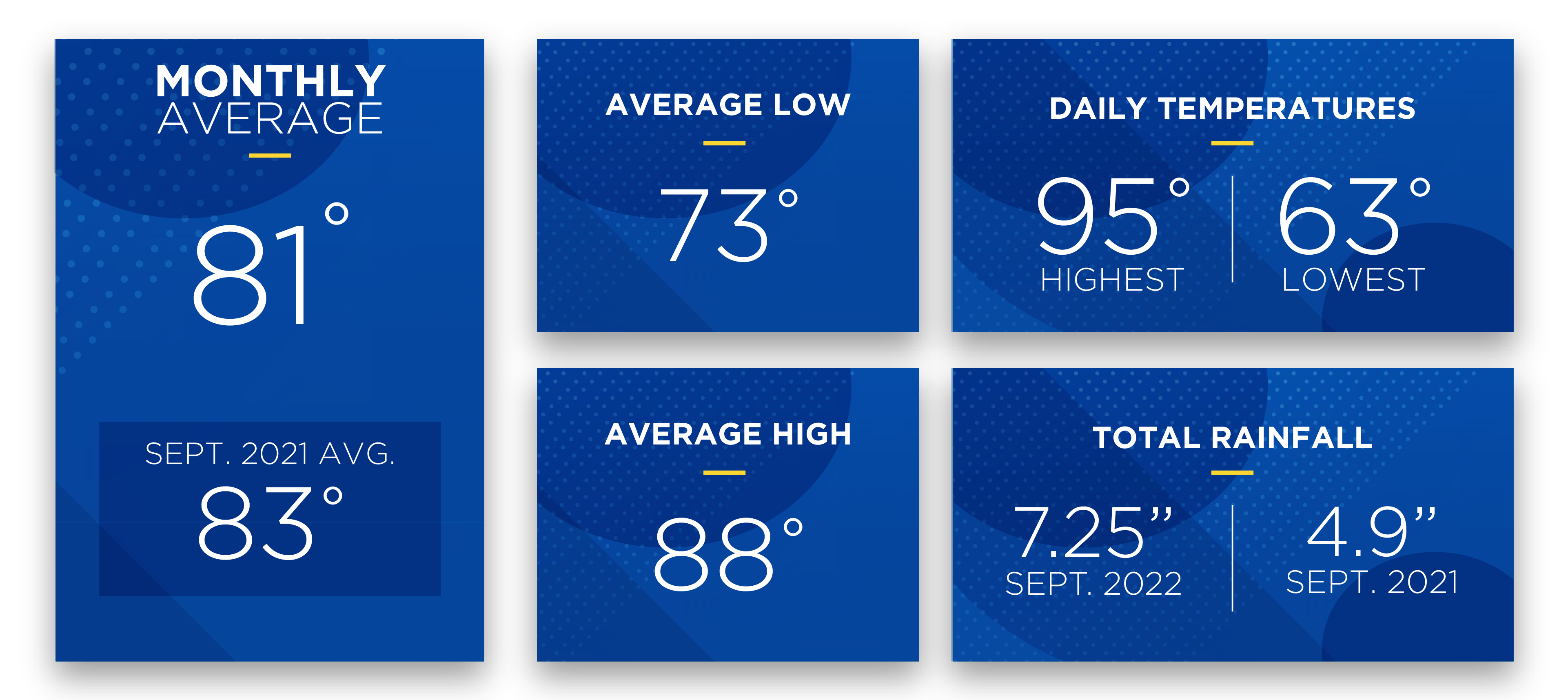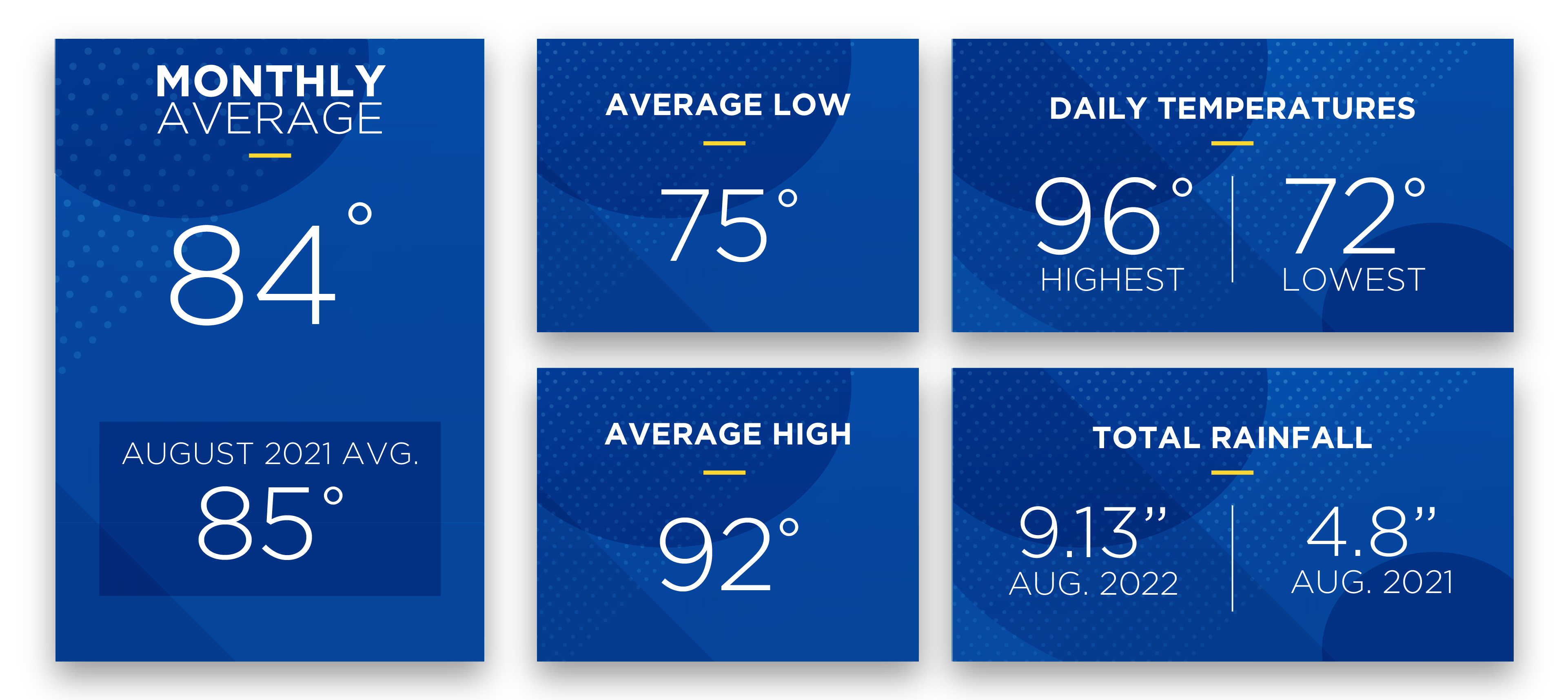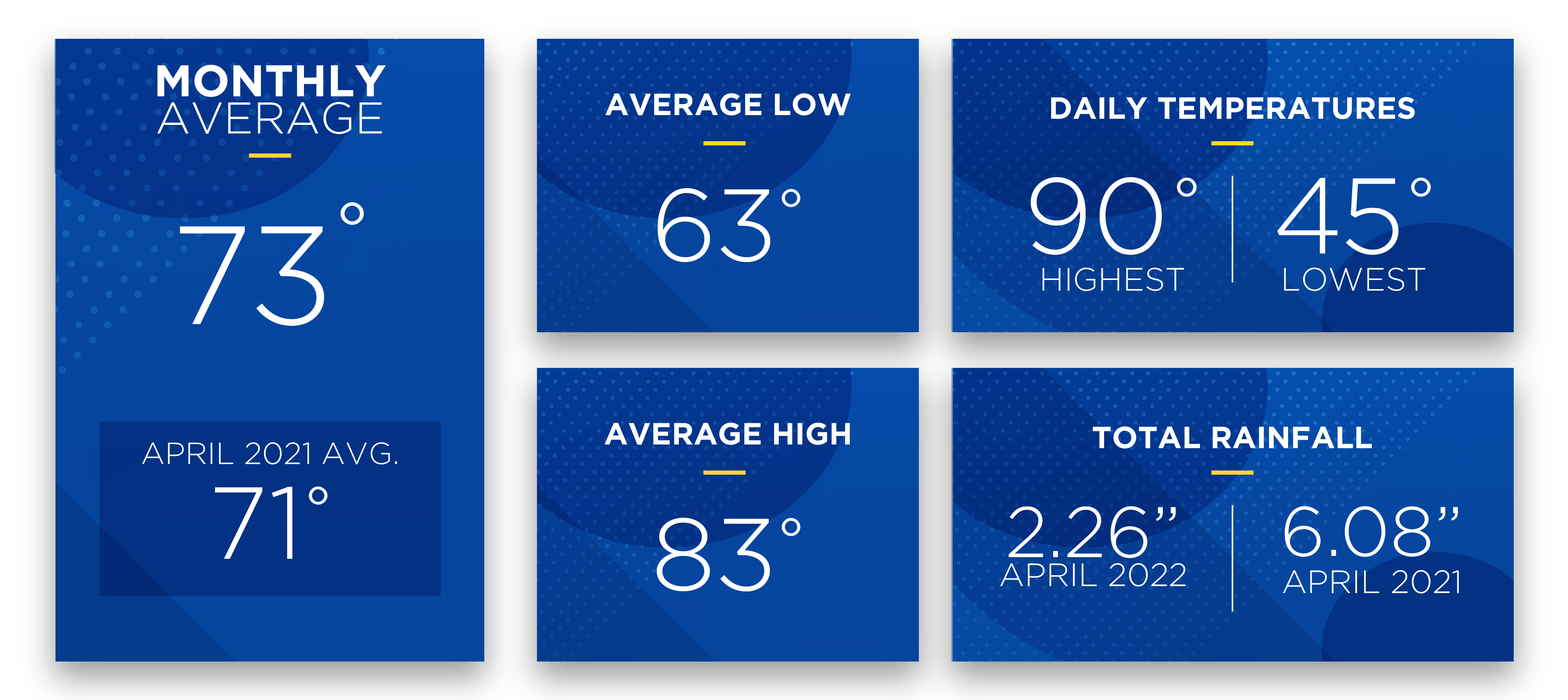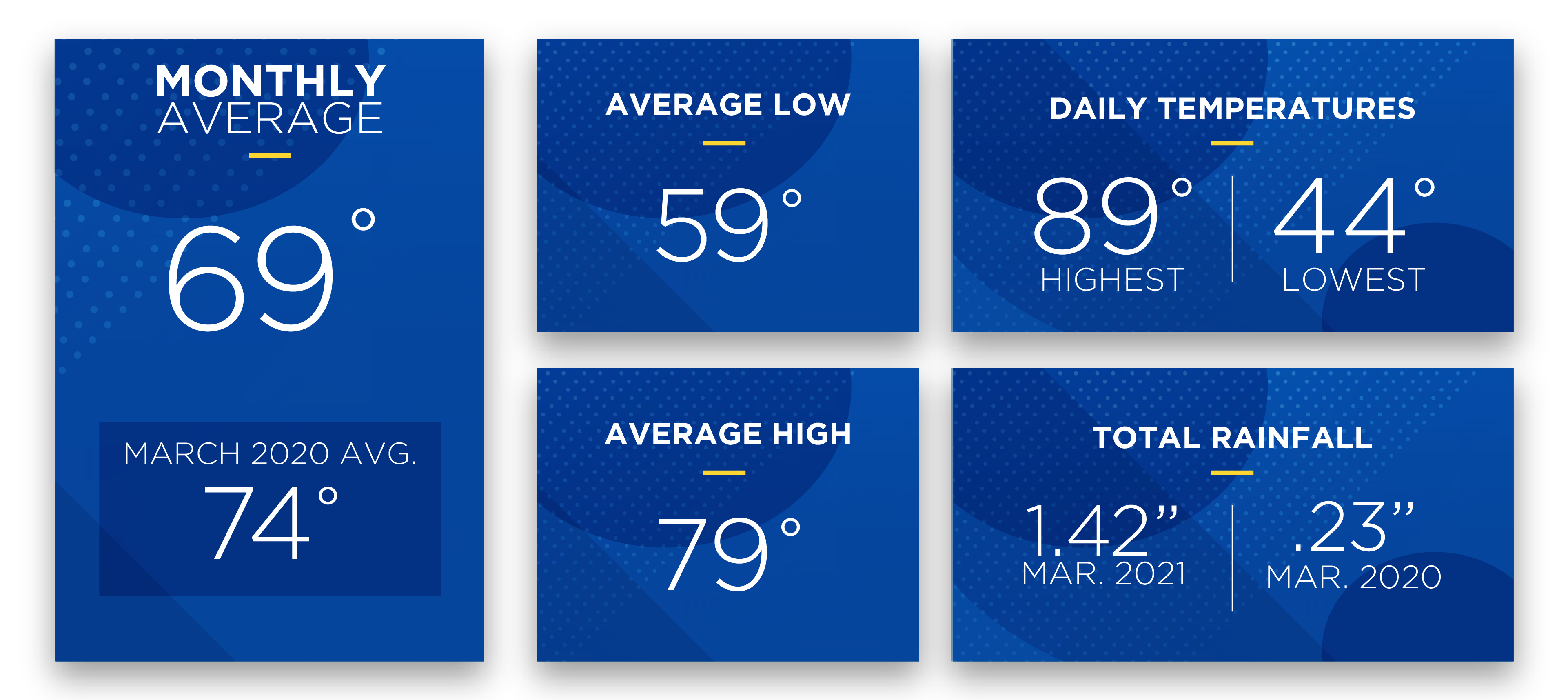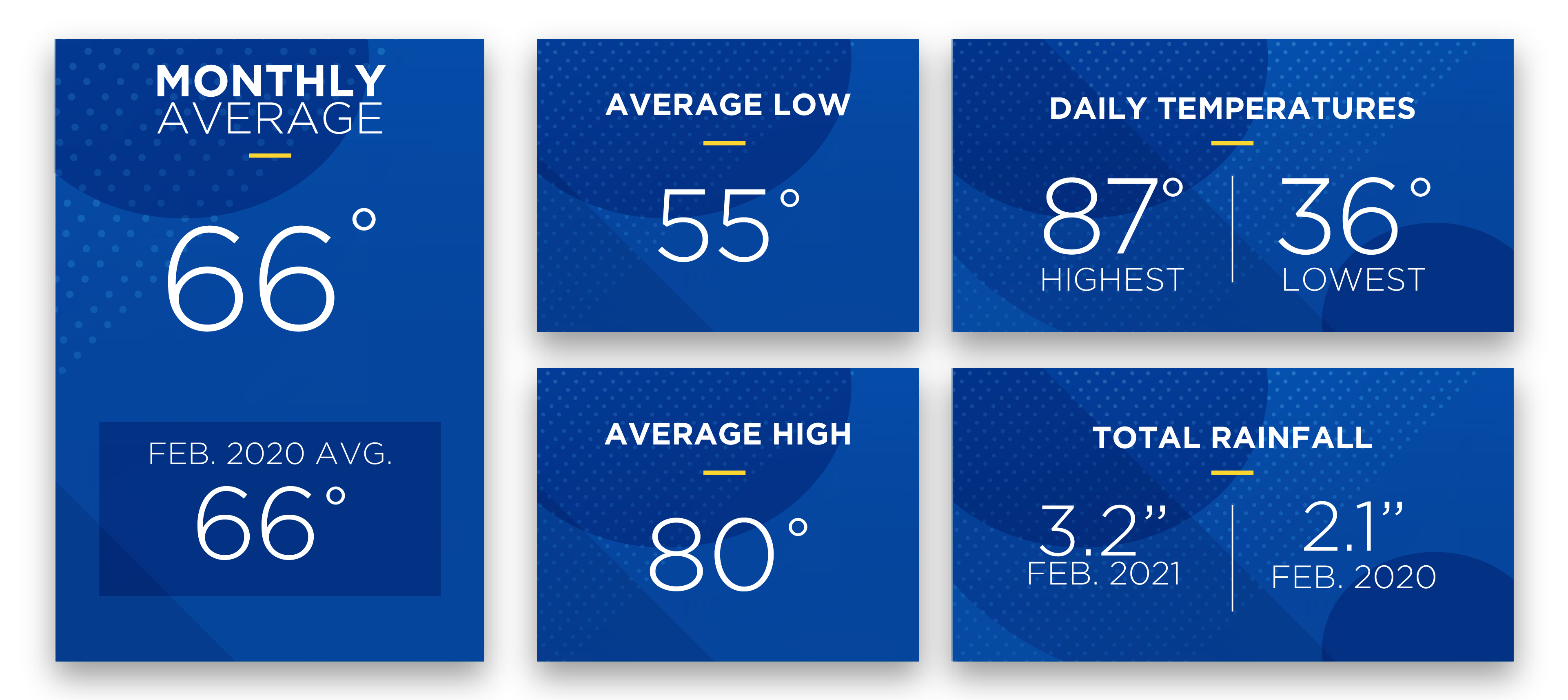September 2022 Sunshine State Stats
Hurricane Ian blazed through Central Florida between Wednesday, September 28, and Thursday, September 29, bringing large amounts of rainfall, high winds and fall temperatures. The average temperature for the month was 81 degrees, which was 3 degrees lower than last month’s average. The average high was 88 degrees while the average low was 73 degrees.
The highest daily recorded temperature (data from the Leesburg KLEE weather station) in September was 95 degrees and the lowest 63 – the highest daily recorded temperature in August 2022 was 96 degrees and the lowest was 72. Rainfall was above average in September. The total precipitation for the month was 7.25 inches, well above the September average rainfall of 5.76 inches.
Daily high temperatures soared over 90 degrees 16 days in September. Hurricane Ian brought a slight cooldown to daily temperatures toward the end of the month. Expect daily highs to reach near 90 degrees into October.
Before September, the 2022 Atlantic hurricane season was mostly inactive. Hurricane Ian made landfall as a strong Category 4 hurricane on Florida’s west coast. It traveled slowly through southwest and central Florida before exiting into the Atlantic and making another landfall in South Carolina. Hurricane Ian was deadly and caused power outages for millions in the southeast United States. At its peak, SECO Energy had just over 11,000 accounts without electric service overnight on the 28th and 29th. All accounts were restored by late on Friday, September 30. It only takes one powerful storm to damage electric transmission and distribution infrastructure causing widespread power outages.
Have a plan in place for hurricane season. Don’t wait until a storm is approaching to prepare. Essential supplies such as water, gasoline, bread and other non-perishable food sell out quickly. Read our Hurricane Handbook to learn more about what to do before, during and after a tropical storm or hurricane.
October forecast:
Expect daily high temperatures to reach into the high to mid 80s during October 2022. Be alert for late-season tropical storm and hurricane activity heading toward Central Florida. Central Florida’s rainy season is winding down, expect less rain and thunderstorms during the month.
HVAC use may be starting to decrease with cooler daily and evening temperatures. For Floridians, HVAC use is a longer span (typically early spring to late fall) than in other parts of the country and runs more frequently. It is likely the highest energy user in your home. Before winter temperatures set in, schedule an HVAC tune up with a qualified technician.
To check historical usage, log into SmartHub to view past bills and consumption charts. If your usage is high, SECO offers several energy-efficiency tools to help you identify energy wasters. Take the Home Energy Assessment to receive a detailed email tailored to your home’s features and lifestyle. The energy-saving advice will provide low-cost ways to decrease your usage – and your electric bill.
To easily calculate how much energy your appliances, lighting, electronic devices, and other energy-using items in your home consume, use the Energy Estimator.




